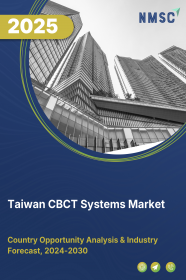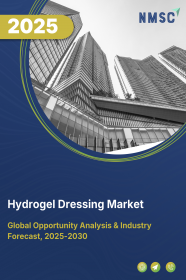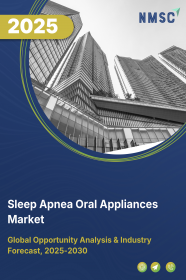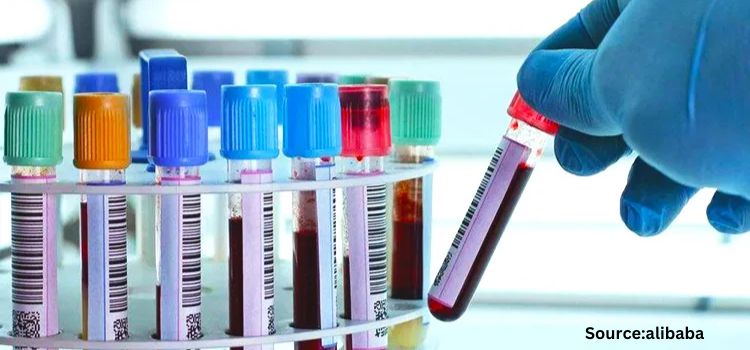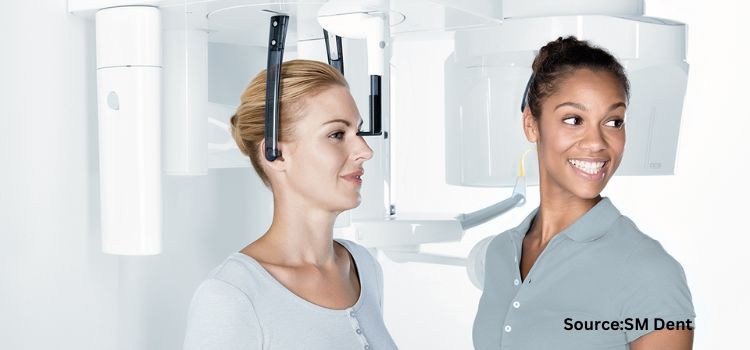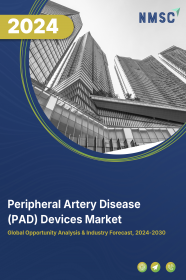
Peripheral Artery Diseases (PAD) Devices Market by Product (Surgical Robotic Systems, Conventional Minimally Invasive Surgical Equipment, Endoscopy, Laparoscopy, and Operating Room (OR) Systems), by Application (Surgical Robotic Systems, and Conventional Minimally Invasive Surgery), by End-user (Hospitals, Ambulatory Surgical Centres/Clinics and Others) – Global Opportunity Analysis and Industry Forecast, 2024–2030
Industry: Healthcare | Publish Date: 29-Nov-2024 | No of Pages: 535 | No. of Tables: 180 | No. of Figures: 145 | Format: PDF | Report Code : HC377
US Tariff Impact on Peripheral Artery Disease (PAD) Devices Market
Trump Tariffs Are Reshaping Global Business
Market Overview
The global Peripheral Artery Diseases (PAD) Devices Market size was valued at USD 4.64 billion in 2023 and is predicted to reach USD 7.70 billion by 2030, with a CAGR of 7.5% from 2024 to 2030.
The Peripheral Artery Disease (PAD) Devices market encompasses a comprehensive array of medical technologies dedicated to combating the challenges posed by peripheral artery disease.
PAD is a vascular condition characterized by the narrowing or blockage of arteries, particularly in the extremities, leading to reduced blood flow. The PAD Devices Market encompasses a diverse range of products, including diagnostic tools that include imaging technologies for accurate disease detection, interventional devices such as angioplasty balloons and stents for minimally invasive treatments, and surgical devices required for more complex interventions.
This market plays a crucial role in addressing the medical needs of individuals with PAD, offering innovative solutions to enhance diagnostic accuracy, improve treatment outcomes, and ultimately contribute to the overall well-being of patients affected by this vascular disorder.
Rising Incidence of Diabetes and Obesity boosts the market growth
The global increase in diabetes and obesity rates is closely associated with a heightened risk of peripheral artery diseases (PAD), leading to a consequential rise in the demand for PAD devices. These health conditions are intricately linked to atherosclerosis, which, in turn, elevates the incidence of PAD and creates a demand for these devices.
The statistics from The International Diabetes Federation (IDF) reveal a significant and concerning trend in the global prevalence of diabetes. In 2021, an estimated 537 million adults aged 20 to 79 are living with diabetes which is expected to reach 643 million by the year 2030.
Furthermore, in March 2022, the World Health Organization reported that over 1 billion individuals globally are diagnosed with obesity, comprising 650 million adults, 340 million adolescents, and 39 million children. This figure continues to rise, and the WHO projects that by 2025, about 167 million individuals, encompassing both adults and children, will experience a decline in health due to being overweight or obese.
This heightened incidence underscores the necessity for specialized devices tailored to effectively manage and treat the intricate challenges posed by the confluence of diabetes, and obesity. Consequently, as the prevalence of diabetes and obesity continues to rise, the demand for innovative PAD devices is propelled, driving growth within the peripheral artery disease devices market.
Surge in old aged population drives the market growth
The increasing global aging population plays a pivotal role in elevating the prevalence of peripheral artery diseases (PAD), thereby fueling the demand for associated medical devices and driving growth in the peripheral artery disease devices market. The physiological changes associated with aging, such as arterial stiffness and atherosclerosis, contribute to a higher incidence of PAD.
According to the latest report published by the World Health Organization in 2022, the number of people above 60 reached 1.4 billion in 2020, which is anticipated to reach 2.1 billion by 2050. This demographic shift underscores the imperative for specialized medical devices tailored to address the unique challenges posed by peripheral artery diseases in older individuals, thereby influencing the expansion and development of the PAD Devices market.
The high cost of these devices restrains the market
The high costs associated with peripheral artery disease (PAD) devices pose a significant constraint on the market. These advanced medical devices, designed to diagnose and treat PAD, involve sophisticated technology and materials, contributing to elevated production costs. Consequently, healthcare providers and patients may face financial challenges in incorporating these devices into their treatment plans.
The integration of AI in Peripheral Artery Diseases Devices creates future opportunity
The integration of Artificial Intelligence (AI) in PAD devices is poised to revolutionize the landscape by enabling early detection, personalized treatment plans, and predictive analytics. AI algorithms can analyze complex medical imaging data, facilitating timely and accurate diagnoses.
Personalized treatment plans, informed by AI-driven analysis of diverse patient data, promise more effective interventions tailored to individual needs. Predictive analytics powered by AI can foresee disease progression, aiding healthcare providers in proactive management.
Moreover, AI enhances imaging and navigation during interventions, improving precision and success rates. With the development of remote patient monitoring through AI, healthcare providers can continuously monitor peripheral artery disease patients, enabling early intervention and reducing the burden on traditional healthcare settings.
As an example, in October 2023, Evident Vascular Inc. introduced AI-enabled intravascular ultrasound technology. This innovation captures detailed images within a patient's blood vessels, allowing for the assessment of vascular diseases and improving the interpretation of images. This development underscores the potential for future opportunities in refining diagnostic capabilities, fostering personalized treatments, and revolutionizing the landscape of vascular care.
North American Region Dominates the Peripheral Artery Diseases Devices Market
The presence of key market players such as Abbott Laboratories, Cardinal Health, Inc., Becton, Dickinson and Company (BD), and others. These global leaders are undertaking strategic initiatives, making substantial investments in research and development, and playing a crucial role in driving significant growth in the peripheral artery disease devices industry.
For instance, in August 2021, Abbott completed the acquisition of Walk Vascular, LLC, a company specializing in minimally invasive medical devices. Walk Vascular is recognized for its mechanical aspiration thrombectomy system, designed for the removal of peripheral blood clots. Abbott integrated Walk Vascular's peripheral thrombectomy systems into its existing portfolio of endovascular products. The acquisition aligns seamlessly with Abbott's commitment to advancing vascular device offerings, enhancing their position in providing unique endovascular therapy solutions for the benefit of patient care.
Moreover, the increasing prevalence of kidney diseases, as highlighted by the Centers for Disease Control and Prevention (CDC), become a significant factor contributing to the demand for PAD devices in the market.
The CDC reports that kidney diseases stand as a prominent cause of mortality in the United States, with approximately 360 individuals initiating dialysis treatment for kidney failure every 24 hours. This escalating health concern underscores the growing need for advanced medical devices and solutions, thereby driving the demand for peripheral artery disease devices in the healthcare sector.
Furthermore, the American College of Cardiology Foundation has characterized Peripheral Artery Disease (PAD) as the last major pandemic of cardiovascular disease. In August 2023, PAD affected approximately 230 million people worldwide and about 8.5 million individuals in the U.S. have been affected by PAD. This substantial prevalence of PAD not only emphasizes its global health impact but also underscores the increasing demand for peripheral artery disease devices in the market.
The growing number of individuals affected by PAD necessitates advancements in medical devices and treatments, driving the expansion of the peripheral artery disease devices market to address the escalating challenges posed by this cardiovascular condition.
Europe is Expected to Show Steady Growth in the Peripheral Artery Diseases Devices Market
Europe is expected to witness an increased demand for the PAD devices market, driven by an escalating prevalence of conditions that include overweight and obesity.
The WHO's 'European Regional Obesity Report 2022' report declared that obesity is the fourth highest cause after high blood pressure, dietary risks, and tobacco, corresponding to more than 13 % of total deaths.
In response to this, a noteworthy development occurred in December 2021 when Royal Philips, a renowned global health technology leader, signed an agreement to acquire Vesper Medical Inc. This US-based medical technology company specializes in the development of minimally invasive peripheral vascular devices.
The acquisition of Vesper Medical augments Philips' range of diagnostic and therapeutic devices, specifically with an advanced venous stent portfolio tailored for treating deep venous disease. This strategic move aligns with the increasing demand for Peripheral Artery Diseases Devices in Europe, addressing the growing healthcare challenges posed by conditions associated with excess weight and obesity.
Competitive Landscape
Several market players operating in the PAD Devices market include Abbott Laboratories, Boston Scientific Corporation, Cardinal Health, Inc., Terumo Corporation, Cook Medical, Becton, Dickinson and Company (BD), Koninklijke Philips N.V, AngioDynamics, Inc., Biotronik, and B. Braun Melsungen AG, and Others.
For instance, in February 2023, Biotronik announced the FDA 510(k) clearance and CE mark of its Oscar multifunctional peripheral catheter. Physicians in the U.S. have already used the novel device in more than 70 cases. Oscar is intended for percutaneous transluminal interventions in the peripheral vasculature. The device was developed to provide support during access into and to dilate stenoses in femoral, popliteal and infrapopliteal arteries.
This advancement in catheter technology aligns with the dynamic landscape of the peripheral artery disease devices market, presenting a notable contribution to percutaneous interventions and vascular care.
Also, in January 2022, Cook Medical secured Breakthrough Device designation from the US Food and Drug Administration (FDA) for a novel drug-eluting stent designed specifically for below-the-knee (BTK) applications. This innovative stent is crafted to address the needs of patients grappling with chronic limb-threatening ischemia (CLTI). CLTI represents a debilitating condition with increasing prevalence worldwide, and this development from Cook Medical is part of the ongoing advancements in the peripheral artery disease (PAD) program.
In addition, in September 2022, B. Braun Medical Inc. (B. Braun), a prominent authority in the fields of infusion therapy and pain management, officially declared its acquisition of the cutting-edge Clik-FIX catheter securement device portfolio from Starboard Medical, Inc.
This strategic acquisition by B. Braun aligns seamlessly with the company's established legacy of pioneering product and program innovations, aimed at advancing the patient experience and optimizing outcomes associated with peripheral intravenous (IV) therapy.
Peripheral Artery Diseases Devices Market Market Segments
By Product
-
Surgical Robotic Systems
-
Conventional Minimally Invasive Surgical Equipment
-
Endoscopy
-
Laparoscopy
-
Operating Room (OR) Systems
By Application
-
Surgical Robotic Systems
-
Conventional Minimally Invasive Surgery
By End User
-
Hospital
-
Ambulatory Surgical Centers
-
Others
By Region
-
North America
-
The U.S.
-
Canada
-
Mexico
-
-
Europe
-
Germany
-
France
-
UK
-
Italy
-
Spain
-
Rest of Europe
-
-
Asia-Pacific
-
Japan
-
China
-
India
-
Australia
-
Rest of Asia-Pacific
-
-
RoW
-
Brazil
-
South Africa
-
Saudi Arabia
-
Remaining Countries
-
Key Players:
-
Abbott Laboratories
-
Angio Dynamics Inc.
-
B. Braun Melsungen AG
-
Biotronik
-
KONINKLIJKE PHILIPS N.V.
-
BOSTON SCIENTIFIC CORPORATION
-
Becton, Dickinson and Company (BD)
-
Cardinal Health Inc.
-
Cook Medical
-
Terumo Medical Corporation
REPORT SCOPE AND SEGMENTATION:
|
Parameters |
Details |
|
Market Size in 2023 |
USD 4.64 Billion |
|
Revenue Forecast in 2030 |
USD 7.70 Billion |
|
Growth Rate |
CAGR of 7.5% from 2024 to 2030 |
|
Analysis Period |
2023–2030 |
|
Base Year Considered |
2023 |
|
Forecast Period |
2024–2030 |
|
Market Size Estimation |
Billion (USD) |
|
Growth Factors |
|
|
Countries Covered |
18 |
|
Companies Profiled |
10 |
|
Market Share |
Available for 10 companies |
|
Customization Scope |
Free customization (equivalent up to 80 working hours of analysts) after purchase. Addition or alteration to country, regional, and segment scope. |
|
Pricing and Purchase Options |
Avail customized purchase options to meet your exact research needs. |

















 Speak to Our Analyst
Speak to Our Analyst



